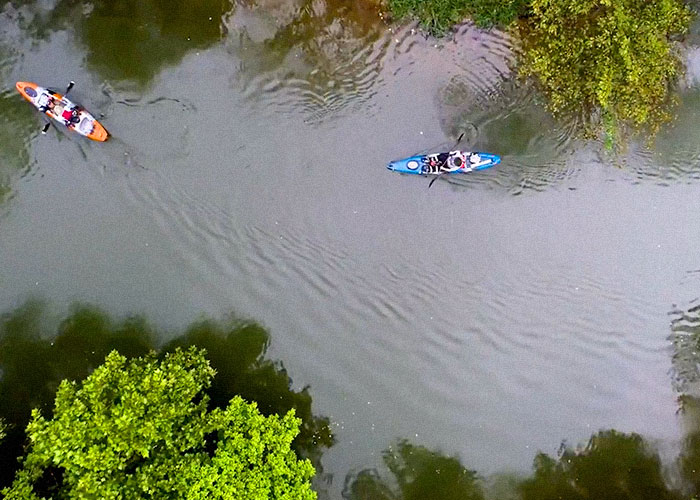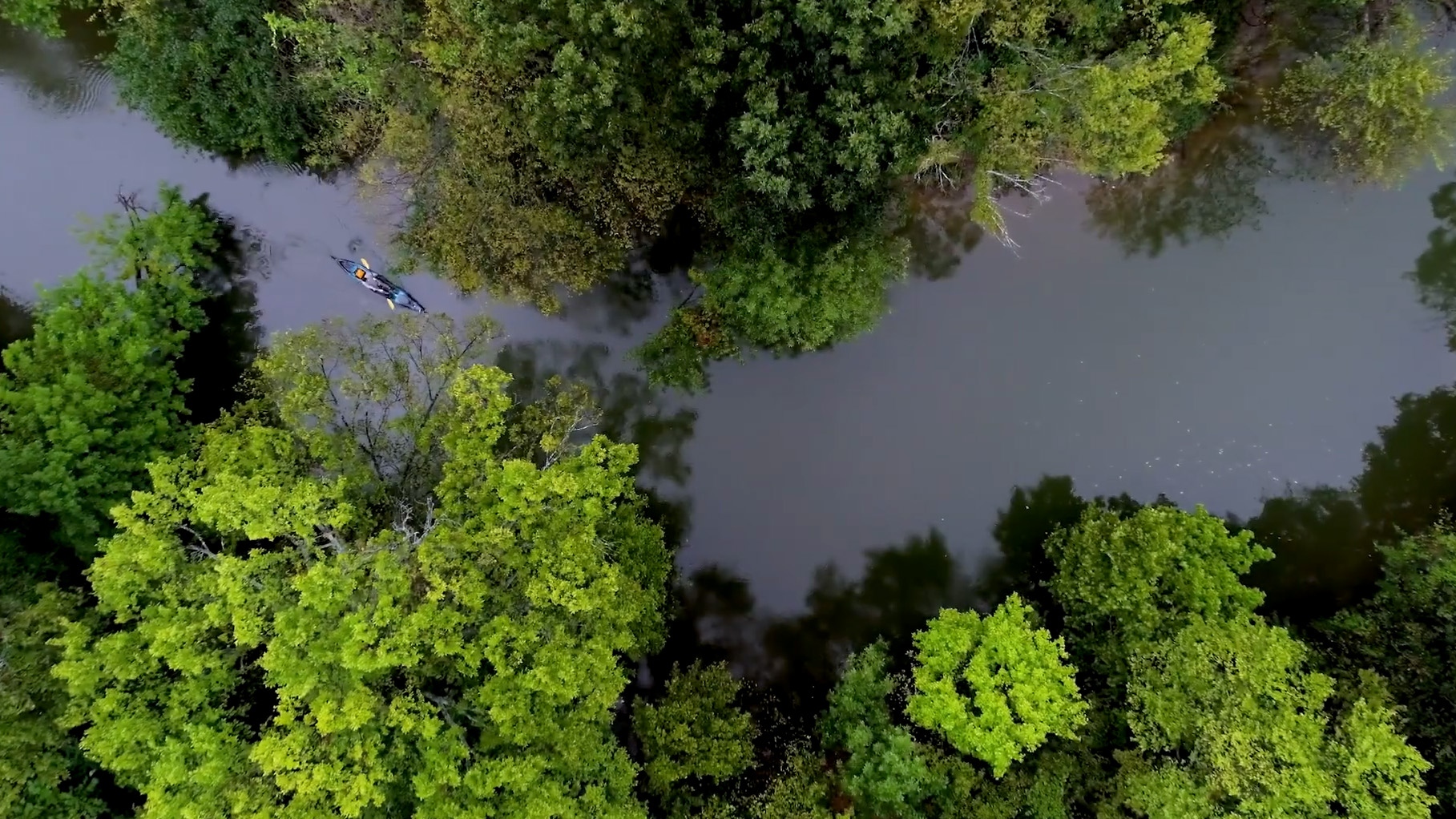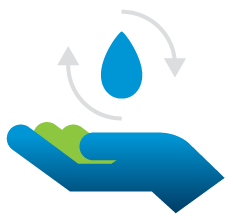
TRWD is proactive in sustaining our existing natural resources.
Education and Outreach Programs
TRWD offers wide-ranging educational programs to support and inspire our communities to conserve and protect our water supply. Our adult education programs focus on building knowledge and skills to maximize water efficiency in our homes and promote the health of rivers and lakes in our community. Our youth programs encourage young persons to value water, understand its journey to reach our faucets, and take action to reduce water use and protect water quality. As a leader in sustainability, it is our social responsibility to educate the public and collaborate with community partners to conserve and protect the water resources that sustain us.
As an industry leader in sustainability, it is our social responsibility to work with environmental partners and educate the public on ways to contribute.
From parks to pipelines, we incorporate environmental stewardship, conservation, and sustainability into all of our practices and processes.
“Sustainability is a mindset. It’s who we are and how we approach projects and operations. It’s about doing the right projects and doing them the right way considering life-cycle costs, the communities we serve, and the environment.”
Rachel IckertWater Resources Engineering Director
Protecting Habitat
The district has built Eagle Mountain Park, Airfield Falls Trailhead & Conservation Park, the George W. Shannon Wetlands, and our beautiful campus Rainscapes. These projects provide important habitats for pollinators, birds, and other wildlife as well as beautiful natural spaces for North Texans to enjoy.
Conserving Water
Conserving our water supply is extremely important. TRWD is responsible for providing water for 2.4 million residents and that number is expected to almost double over the next 50 years. Water conservation efforts are a water supply strategy for the district and currently help save an average of 50 million gallons per day. Education efforts with our customers and regional partners are helping to change behaviors and create a sustainable future for North Texas. Learn more about our water conservation programs.
Stormwater Guidance
Rain must go somewhere, and it can present challenges with the toxins and litter it pulls into a water supply system. TRWD works with the City of Fort Worth to implement a Stormwater Management Plan (MS4 SWMP) that helps reduce the amount of pollutants flowing into the Trinity River system.
The District has developed a Water Quality Guidance Manual that outlines construction standards for all projects that occur in the floodway. The purpose of this document is to minimize soil runoff during construction as well as establish post-construction standards that will reduce erosion potential.
StoryMap: Best Management Practices Along the Trinity RiverStoryMap: Best Management Practices Along the Trinity River
Water Quality ResourcesWater Quality Resources
Water Quality
For decades, TRWD has monitored water quality in our lakes and in the Trinity River, both of which are sources of drinking water and popular recreation destinations. We also actively look for ways to improve water quality and protect our watersheds through stormwater management, education, land management practices, and scientific research.
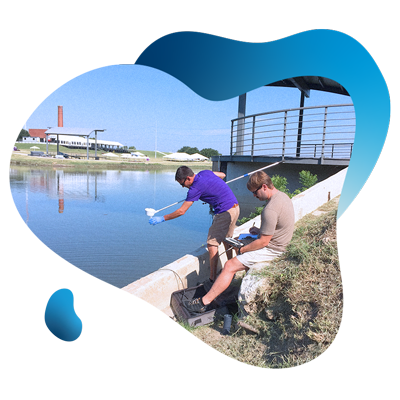
Monitoring
Keeping tabs on water quality is important, and we do so through an established program that allows us to track the health of our reservoirs over time. We’ve been monitoring our system for almost 30 years. The Trinity River and seven North Texas lakes are sampled continuously at multiple sites for various parameters, providing valuable information that can help lower treatment costs for our customers and keep our lakes and rivers thriving for wildlife and recreational uses.
Lake SamplingLake Sampling Trinity River Monitoring ProgramTrinity River Monitoring Program
Learn more about how we're protecting the health of our reservoirs
Modeling
To study TRWD lakes, the district utilizes the WASP model developed by the EPA. Models like this one are used to better understand our complex water systems and help manage them into the future.
Currently, the district is working to develop two additional models for the Trinity River that will simulate river flow and erosion impacts on the river as well as other parameters.
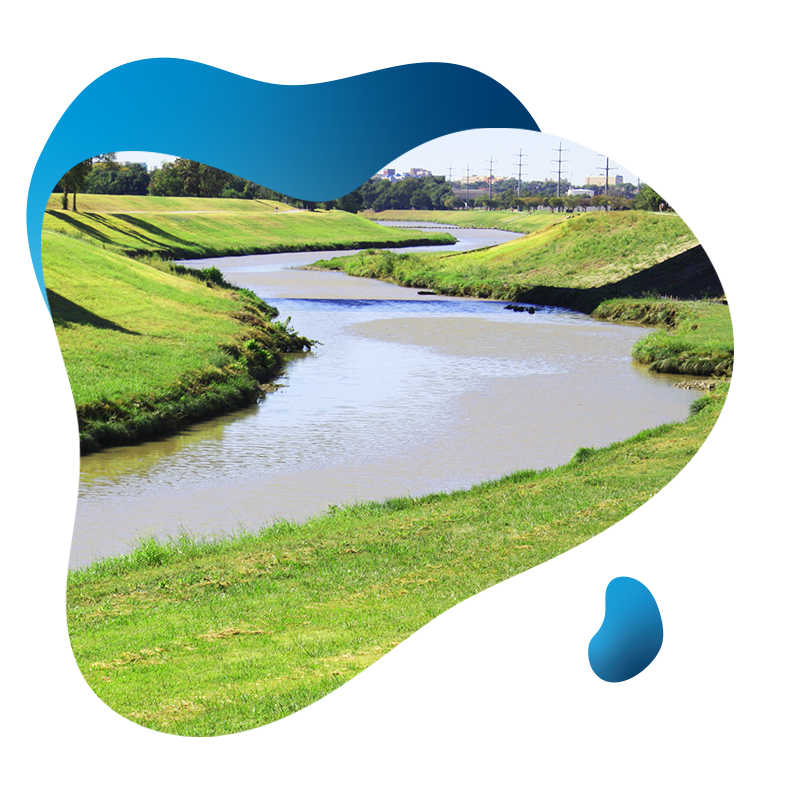
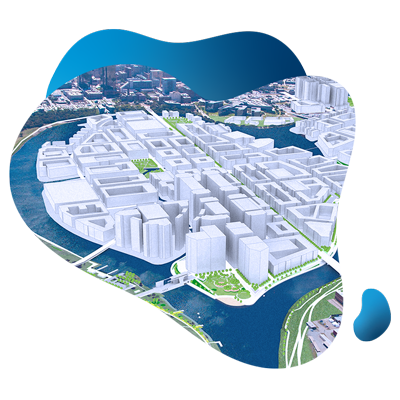
Modeling
To study TRWD lakes, the district utilizes a the WASP model developed by the EPA. Models like this one are used to better understand our complex water systems and help manage them into the future.
Currently, the district is working to develop two additional models for the Trinity River that will simulate river flow and erosion impacts on the river as well as other parameters. (link to end user and tie into growth around the Trinity River?).

